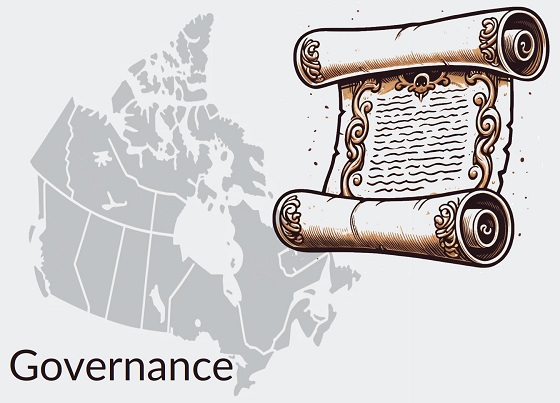David Clinton
Is Canada Abusing the Charter of Rights and Freedoms?

Canadians have no absolute right to equal treatment under the law.
Monitoring the intersection between equality and equity
Let me explain that. Section 15 of the Charter of Rights and Freedoms was, from the perspective of the Charter’s creators, an exceedingly difficult needle to thread. The tension between its two subsections carries the potential for confusion and even abuse. Here’s the text itself:
(1) Every individual is equal before and under the law and has the right to the equal protection and equal benefit of the law without discrimination and, in particular, without discrimination based on race, national or ethnic origin, colour, religion, sex, age or mental or physical disability.
(2) Section (1) does not preclude any law, program or activity that has as its object the amelioration of conditions of disadvantaged individuals or groups including those that are disadvantaged because of race, national or ethnic origin, colour, religion, sex, age or mental or physical disability.
15(1) guaranteed the equal treatment of all individuals. That’s something I can’t imagine any reasonable-minded person opposing. The problem was that, at the same time, the authors also wanted to leave room for unfair treatment for select groups through affirmative action programs. That’s the purpose of 15(2).
The Audit is a reader-supported publication. To receive new posts and support my work, consider becoming a free or paid subscriber.
If 15(2) didn’t exist, challenges to, say, hiring practices targeting historically disadvantaged racial groups could be launched based on the rights found in 15(1). Imagine people who didn’t technically qualify as disadvantaged but who might be better suited for and in greater immediate need of an advertised job. If the “affirmative action” candidate was nevertheless hired, couldn’t the others argue that they’d just suffered Charter-level discrimination? 15(2) is designed to ensure such challenges don’t happen.
Such state-imposed inequality may or may not be justifiable. That’s a debate that doesn’t interest me right now. Instead, my primary focus is on how the principle could be widely abused.
I should clarify that these rules only apply to government programs and agencies. While private companies might be bound by other areas of related law, the Charter was only written for government operations. But it’s nevertheless worth remembering that 4.4 million Canadians work for one level or another of government (when you include hospitals and public schools). That’s around 21 percent of all Canadian workers. And many more of us interact with governments regularly.
What kinds of abuse are possible? Well, consider how so many equality-related decisions are highly subjective and rely on the good faith and clarity of mind of the policy makers and public officials in positions of power. In that context:
- How can we know that factors like “ameliorative”, “disproportionate”, or “disadvantaged” are accurately and appropriately defined?
- How can we know that favoring one group won’t cause deep and irreparable harm to others?
- How can we know that even good-faith decisions aren’t made based on outdated assumptions or inaccurate stereotypes?
Easy-to-imagine practical examples of abuse could include:
- Provincial scholarship programs that target low-income students from only certain ethnic groups while excluding members of other groups who might currently experience even greater financial hardship.
- Seats in highly competitive university programs that are restricted to only candidates expressing specified identities without objective evidence that such individuals are currently meaningfully underrepresented in those programs or professional fields.
- Government-funded employment programs that subtly target communities likely to share particular political beliefs.
- Internal career advancement policies that prioritize identity and ethnicity over competence that lead to reduced organizational capacity.
- Social disruption due to arbitrary official favoritism for some ethnicities and identities over others.
Of course, misuse of 15(2) can always be tested in court. Programs are, after all, expected to pass the Oakes Test (for objectives that are pressing and substantial) and the Kapp Test (for goals that are truly ameliorative and appropriately targeted).
But that requires someone who notices the problem and has the considerable means necessary to launch a court challenge. There aren’t many people like that running around.
A government that felt that misuse of the law was causing significant damage to society could choose to by-pass 15(2) altogether by invoking the Notwithstanding Clause or by amending the constitution itself. But…well, good luck surviving either attempt.
More realistically, the government could write new legislation that guides the interpretation or application of 15(2). That could mean carefully defining what constitutes an “ameliorative program” or setting clear eligibility criteria for such programs. There would be no need to change the constitution, simply to properly define it.
Alternatively, governments could govern by example. This might mean tailoring their own policies and programs to reflect a more constrained interpretation of 15(2). They could actively participate in court cases to advocate for particular interpretations and present compelling arguments to influence how courts understand and apply the provision.
Finally, of course, they could appoint judges to the Supreme Court and federal courts who are more aligned with values associated with absolute equality under the law.
Subscribe to The Audit.
For the full experience, upgrade your subscription.
Business
There’s No Bias at CBC News, You Say? Well, OK…

It’s been nearly a year since I last wrote about the CBC. In the intervening months, the Prescott memo on bias at the BBC was released, whose stunning allegations of systemic journalistic malpractice “inspired” multiple senior officials to leave the corporation. Given how the institutional bias driving problems at the BBC is undoubtedly widely shared by CBC employees, I’d be surprised if there weren’t similar flaws embedded inside the stuff we’re being fed here in Canada.
Apparently, besides receiving nearly two billion dollars¹ annually in direct and indirect government funding, CBC also employs around a third of all of Canada’s full time journalists. So taxpayers have a legitimate interest in knowing what we’re getting out of the deal.
Naturally, corporate president Marie-Philippe Bouchard has solemnly denied the existence of any bias in CBC reporting. But I’d be more comfortable seeing some evidence of that with my own eyes. Given that I personally can easily go multiple months without watching any CBC programming or even visiting their website, “my own eyes” will require some creative redefinition.
So this time around I collected the titles and descriptions from nearly 300 stories that were randomly chosen from the CBC Top Stories RSS feed from the first half of 2025. You can view the results for yourself here. I then used AI tools to analyze the data for possible bias (how events are interpreted) and agendas (which events are selected). I also looked for:
- Institutional viewpoint bias
- Public-sector framing
- Cultural-identity prioritization
- Government-source dependency
- Social-progressive emphasis
Here’s what I discovered.
Story Selection Bias
Millions of things happen every day. And many thousands of those might be of interest to Canadians. Naturally, no news publisher has the bandwidth to cover all of them, so deciding which stories to include in anyone’s Top Story feed will involve a lot of filtering. To give us a sense of what filtering standards are used at the CBC, let’s break down coverage by topic.
Of the 300 stories covered by my data, around 30 percent – month after month – focused on Donald Trump and U.S.- Canada relations. Another 12-15 percent related to Gaza and the Israel-Palestine conflict. Domestic politics – including election coverage – took up another 12 percent, Indigenous issues attracted 9 percent, climate and the environment grabbed 8 percent, and gender identity, health-care worker assaults, immigrant suffering, and crime attracted around 4 percent each.
Now here’s a partial list of significant stories from the target time frame (the first half of 2025) that weren’t meaningfully represented in my sample of CBC’s Top Stories:
- Housing affordability crisis barely appears (one of the top voter concerns in actual 2025 polls).
- Immigration levels and labour-market impact.
- Crime-rate increases or policing controversies (unless tied to Indigenous or racialized victims).
- Private-sector investment success stories.
- Any sustained positive coverage of the oil/gas sector (even when prices are high).
- Critical examination of public-sector growth or pension liabilities.
- Chinese interference or CCP influence in Canada (despite ongoing inquiries in real life).
- The rest of the known galaxy (besides Gaza and the U.S.)
Interpretation Bias
There’s an obvious pattern of favoring certain identity narratives. The Indigenous are always framed as victims of historic injustice, Palestinian and Gazan actions are overwhelmingly sympathetic, while anything done by Israelis is “aggression”. Transgender representation in uniformly affirmative while dissent is bigotry.
By contrast, stories critical of immigration policy, sympathetic to Israeli/Jewish perspectives, or skeptical of gender medicine are virtually non-existent in this sample.
That’s not to say that, in the real world, injustice doesn’t exist. It surely does. But a neutral and objective news service should be able to present important stories using a neutral and objective voice. That obviously doesn’t happen at the CBC.
Consider these obvious examples:
- “Trump claims there are only ‘2 genders.’ Historians say that’s never been true” – here’s an overt editorial contradiction in the headline itself.
- “Trump bans transgender female athletes from women’s sports” which is framed as an attack rather than a policy debate.
And your choice of wording counts more than you might realize. Verbs like “slams”, “blasts”, and “warns” are used almost exclusively describing the actions of conservative figures like Trump, Poilievre, or Danielle Smith, while “experts say”, “historians say”, and “doctors say” are repeatedly used to rebut conservative policy.
Similarly, Palestinian casualties are invariably “killed“ by Israeli forces – using the active voice – while Israeli casualties, when mentioned at all, are described using the passive voice.
Institutional Viewpoint Bias
A primary – perhaps the primary job – of a serious journalist is to challenge the government’s narrative. Because if journalists don’t even try to hold public officials to account, then no one else can. Even the valuable work of the Auditor General or the Parliamentary Budget Officer will be wasted, because there will be no one to amplify their claims of wrongdoing. And Canadians will have no way of hearing the bad news.
So it can’t be a good sign when around 62 percent of domestic political stories published by the nation’s public broadcaster either quote government (federal or provincial) sources as the primary voice, or are framed around government announcements, reports, funding promises, or inquiries.
In other words, a majority of what the CBC does involves providing stenography services for their paymasters.
Here are just a few examples:
- “Federal government apologizes for ‘profound harm’ of Dundas Harbour relocations”
- “Jordan’s Principle funding… being extended through 2026: Indigenous Services”
- “Liberal government announces dental care expansion the day before expected election call”
Agencies like the Bank of Canada, Indigenous Services Canada, and Transportation Safety Board are routinely presented as authoritative and neutral. By contrast, opposition or industry critiques are usually presented as secondary (“…but critics say”) or are simply invisible. Overall, private-sector actors like airlines, oil companies, or developers are far more likely to be criticized.
All this is classic institutional bias: the state and its agencies are the default lens through which reality is filtered.
Not unlike the horrors going on at the BBC, much of this bias is likely unconscious. I’m sure that presenting this evidence to CBC editors and managers would evoke little more than blank stares. This stuff flies way below the radar.
But as one of the AI tools I used concluded:
In short, this 2025 CBC RSS sample shows a very strong and consistent left-progressive institutional bias both in story selection (agenda) and in framing (interpretation). The outlet functions less as a neutral public broadcaster and more as an amplifier of government, public-sector, and social-progressive narratives, with particular hostility reserved for Donald Trump, Canadian conservatives, and anything that could be construed as “right-wing misinformation.”
And here’s the bottom line from a second tool:
The data reveals a consistent editorial worldview where legitimate change flows from institutions downward, identity group membership is newsworthy, and systemic intervention is the default solution framework.
You might also enjoy:
Is Updating a Few Thousand Readers Worth a Half Million Taxpayer Dollars? |
||||||
|
||||||
| Plenty has been written about the many difficulties faced by legacy news media operations. You might even recall reading about the troubled CBC and the Liberal government’s ill-fated Online News Act in these very pages. Traditional subscription and broadcast models are drying up, and on-line ad-based revenues are in sharp decline. | ||||||
|
Subscribe to The Audit.
For the full experience, upgrade your subscription.
Business
Why Does Canada “Lead” the World in Funding Racist Indoctrination?
-

 Business2 days ago
Business2 days agoArgentina’s Milei delivers results free-market critics said wouldn’t work
-

 espionage1 day ago
espionage1 day agoCarney Floor Crossing Raises Counterintelligence Questions aimed at China, Former Senior Mountie Argues
-

 Health15 hours ago
Health15 hours agoFDA warns ‘breast binder’ manufacturers to stop marketing to gender-confused girls
-

 Daily Caller14 hours ago
Daily Caller14 hours agoTrump Reportedly Escalates Pressure On Venezuela With Another Oil Tanker Seizure
-

 Business23 hours ago
Business23 hours agoTaxing food is like slapping a surcharge on hunger. It needs to end
-

 Energy1 day ago
Energy1 day ago75 per cent of Canadians support the construction of new pipelines to the East Coast and British Columbia
-

 Business2 days ago
Business2 days agoDeadlocked Jury Zeroes In on Alleged US$40 Million PPE Fraud in Linda Sun PRC Influence Case
-

 Health21 hours ago
Health21 hours agoAll 12 Vaccinated vs. Unvaccinated Studies Found the Same Thing: Unvaccinated Children Are Far Healthier













